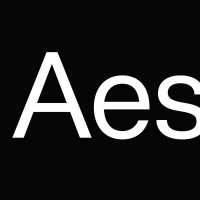Uppercase versus Lowercase diacritics
Options

Michael Jarboe
Posts: 265
I'm curious what the opinions are on uppercase versus lowercase diacritics height/size/positioning, and what one thinks is best practice.
I've seen examples of:
1. Either no, or almost no perceptible difference between uppercase/lowercase mark height and positioning
2. Difference in positioning only, uppercase/lowercase marks are equal in height (lowered positioning on caps to decrease overall vertical height of accented glyph)
3. Difference of mark height only (positioning looks more relative to lowercase, but uppercase marks aren't as tall, therefore again, decreasing overall vertical height of accented glyph)
4. Difference in positioning and height of mark (these are most extreme, greatly reducing overall vertical height of accented glyphs)
And then there are examples where the mark isn't necessarily adjusted in height linearly, but the form looks rotated to decrease its vertical reach.
Are these differences and the decisions behind these variations more genre specific overall or more personal preference?
Are the extreme examples more so typical in display faces where all caps setting with tight leading could be desired?
I've seen examples of:
1. Either no, or almost no perceptible difference between uppercase/lowercase mark height and positioning
2. Difference in positioning only, uppercase/lowercase marks are equal in height (lowered positioning on caps to decrease overall vertical height of accented glyph)
3. Difference of mark height only (positioning looks more relative to lowercase, but uppercase marks aren't as tall, therefore again, decreasing overall vertical height of accented glyph)
4. Difference in positioning and height of mark (these are most extreme, greatly reducing overall vertical height of accented glyphs)
And then there are examples where the mark isn't necessarily adjusted in height linearly, but the form looks rotated to decrease its vertical reach.
Are these differences and the decisions behind these variations more genre specific overall or more personal preference?
Are the extreme examples more so typical in display faces where all caps setting with tight leading could be desired?
Tagged:
1
Comments
-
I think it's vital to make cap diacritics flatter, and have them hug the base forms a bit tighter, or they stick up like luggage on a roof rack and collide with descenders. Much more importantly, that's what Victor Gaultney thinks, unless I misunderstood his Extended Latin workshop at TypeCon.
Also think you generally have to redraw the acute and grave if you're making them more horizontal. If the form looks like it's been rotated, someone wasn't taking enough care.
5 -
Speaking of which, is it okay to have flattened cap acute for Polish?0
-
@Adrien Tétar
I'm not sure, but since the Polish kreska is almost vertical, maybe a shorter one instead of a flattened one would be good for the job?1
Categories
- All Categories
- 46 Introductions
- 3.8K Typeface Design
- 476 Type Design Critiques
- 555 Type Design Software
- 1.1K Type Design Technique & Theory
- 640 Type Business
- 831 Font Technology
- 29 Punchcutting
- 508 Typography
- 120 Type Education
- 313 Type History
- 75 Type Resources
- 109 Lettering and Calligraphy
- 30 Lettering Critiques
- 79 Lettering Technique & Theory
- 533 Announcements
- 86 Events
- 110 Job Postings
- 167 Type Releases
- 169 Miscellaneous News
- 274 About TypeDrawers
- 53 TypeDrawers Announcements
- 119 Suggestions and Bug Reports


